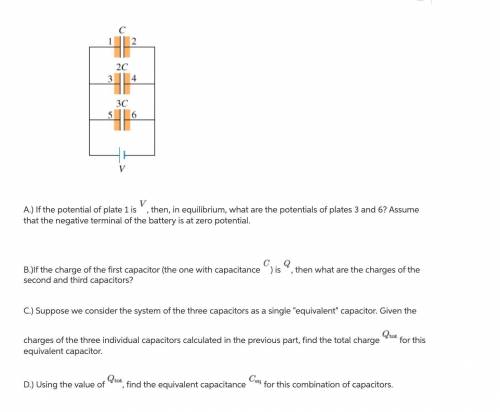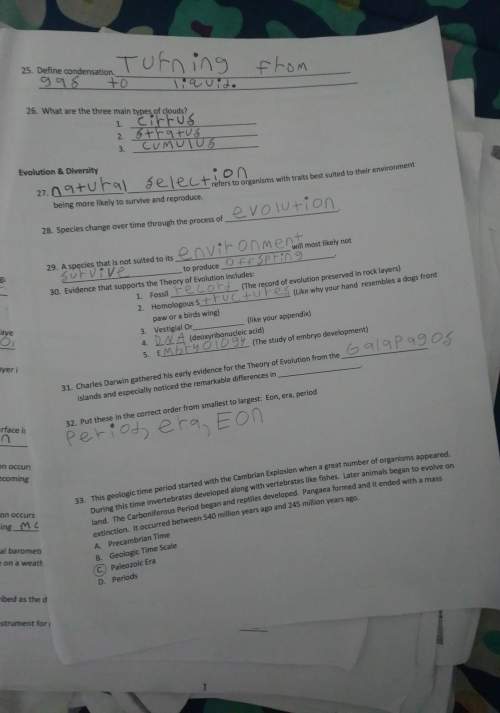
Part AIf the potential of plate 1 is V, then, in equilibrium, what are the potentials of plates 3 and 6? Assume that the negative terminal of the battery is at zero potential. Part BIf the charge of the first capacitor (the one with capacitance C) is Q, then what are the charges of the second and third capacitors?Part CSuppose we consider the system of the three capacitors as a single "equivalent" capacitor. Given the charges of the three individual capacitors calculated in the previous part, find the total charge Qtot for this equivalent capacitor. Part DUsing the value of Qtot, find the equivalent capacitance Ceq for this combination of capacitors. Express your answer in terms of C.

Answers: 2


Another question on Physics

Physics, 21.06.2019 22:30
Under conditions for which the same room temperature is maintained by a heating or cooling system, it is not uncommon for a person to feel chilled in the winter but comfortable in the summer. provide a plausible explanation for this situation (with supporting calculations) by considering a room whose air temperature is maintained at 20â°c throughout the year, while the walls of the room are nominally at 27â°c and 14â°c in the summer and winter, respectively. the exposed surface of a person in the room may be assumed to be at a temperature of 32â°c throughout the year and to have an emissivity of 0.90. the coefficient associated with heat transfer by natural convection between the person and the room air is approximately 2 w/m2 â‹…â‹… k. what is the ratio of the thermal resistance due to convection to the thermal resistance due to radiation in the summer? what is the ratio of thermal resistances in the winter
Answers: 1

Physics, 21.06.2019 23:30
If 21.2 kcals of energy is released by this reaction, how many kj does the reaction release? (1 cal 4.184 j)
Answers: 1

Physics, 22.06.2019 00:20
In the derivation of rrkm theory, a factor of 1/2 is introduced when equalizing the rates of formation and decomposition of activated complex as keal-hr) = ko this is clearly against the assumption of transition state theory that states all the activated complex in the transition state iss going to the product. find the reason why this factor is introduced here.
Answers: 2

Physics, 22.06.2019 06:30
What are similarities and differences between refraction, reflection, diffraction and absorption?
Answers: 3
You know the right answer?
Part AIf the potential of plate 1 is V, then, in equilibrium, what are the potentials of plates 3 an...
Questions

Mathematics, 21.01.2021 22:40

Computers and Technology, 21.01.2021 22:40





Mathematics, 21.01.2021 22:40

English, 21.01.2021 22:40

English, 21.01.2021 22:40


Mathematics, 21.01.2021 22:40





Chemistry, 21.01.2021 22:40








